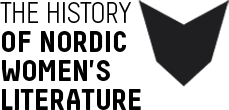In the 1950s and 1960s a series of women writers took centre stage in Nordic literature. They stood forth as full-fledged modernists and they were greeted with ovations. They rewrite the isolation of modernism, but though they position themselves at the forefront of the literary stage, they place their literature at the service of the outsider.They write themselves into the tradition where the poet is a stranger on the outskirts of society, but they also place themselves outside this literary tradition and constantly butt their heads against its accepted definitions, symbols, and use of language. A common theme is the culturally marginalised, that which among post-war and even more among post-modernist philosophers has been defined as ‘the female’.
Tag: 1960-1970
In the 1980s, the historical novel, a centuries-old favourite among female readers, underwent a process of serious revision. The female heroes were brought up to date. The heroines were adapted to the contemporary world, and together with the new romance literature, the new feminist historical novel captured the interest of women readers.New women writers throughout the Nordic region began to write about hidden, forgotten, overlooked, or entirely unknown women from past centuries, and the books were welcomed by huge audiences (and by reviewers) with such overwhelming interest that it began to look like just the genre for which they had all been searching for so many years.
Young adult fiction underwent dramatic changes in the 1960s and the following decades. New ways of depicting the experiences of young people were on display in the social-realist young adult fiction of the 1970s. In contrast to the older, often moralising literature, the modern young adult book breaks down both systems and taboos.No theme is off limits, and traditional gender roles, relationships to authorities, and social structures are criticised more and more openly. The points of view and sympathies of the new generation of writers are with the books’ young, often maladjusted and rebellious main characters, who are in discord with themselves and with the adult world around them.
The postwar generation of writers in Finland felt an enormous need to break the ties to the classical lyrical tradition and the rhetorically empty language from before the Second World War.Common traits in modernist prose in Finland are the linguistic rebellion against earlier traditions, the shifts of point of view, and an ironic style that may slip into parody. Breaches of syntax are frequent. The novelty is that even the non-dramatic incidents are also depicted accurately and take on a symbolic value, and that reality is described as more complex than hitherto.
The Danish author Vita Andersen’s prose poetry was nicknamed knækprosa (broken prose) because the poems were apparently nothing more than narratives made up of lines of uneven length. However, her narrative and characterising poetry is more complex than it initially appears. It is in itself a staging of everyday language, an exhibition of the force, the roles, and the confinement in the lives and speech of the characters, but by no means an artless repetition. The gender roles as a guarantee against a happy interaction between the genders is a central theme in her texts.Charlotte Strandgaard made her debut in 1965, and throughout the 1960s and 70s she wrote a number of collections of poetry and documents that focused on typical problems such as alcoholism, drug addiction, social outcasts, and losers. Her universe is ruled by suffering, misunderstandings between those who want to love each other, guilt, and hopelessness. The tone (and the position) is compassionate, and there is a willingness to find an explanation and a solution. Her adults, like those of Vita Andersen, are wounded children; however, in Charlotte Strandgaard’s world there is a steady insistence on reconciliation and redemption alongside the pain.
Cecilie Løveid’s first three lyrical prose novels make a radical break from the social realist novel dominant in Norway in the 1970s. Løveid insists on her modernist aesthetics, in which fragments, collage, intertextuality, and polyphony are preferred to the codes of realism. Her fundamental affinity is with poetry, and because she remains a modernist poet no matter what genre she approaches, it becomes impossible for her to submit to a social realist idiom.The same is true of Kari Bøge, whose experimental debut work Asmorelda, from 1971, makes a radical break from the realistic narrative tradition and represents one of the first significant attempts at a new female modernist prose in Norway. Her insistence on an ahistorical individualism and an aesthetics of emptiness marks a departure from other women writers of the period around 1970. However, she also embarks on themes that were and are central to feminist-oriented writing: the question of identity, the relationship to the husband, and the relationship to writing.
On the New Language-Conscious Literature of the 60s and 70s
The Cultural Duality of Emigrant Literature
Throughout her long and popular writing career, Martha Christensen built on social realism and a critical involvement in how society treats the weak. In her stories, the social system itself becomes a powerful character that prevails over individual will.Martha Christensen’s critical socio-psychology is not directly political in the same way as Dea Trier Mørch’s stories about the relationship between the individual and society. In her work, the system becomes the necessary organisation and the holistic entity that forms cohesion in individuals’ lives and takes care of them. However, her attitudes and her entire body of work are a critical depiction of the modern welfare society and its view of humanity.Her texts remain within the social structure she criticises, whereas the critic of modernism Anne Marie Løn, following her urban novel Veras vrede (1982; Vera’s Anger), journeys through time, the country, and other types of social life in her search for a positive counterpart to the destructive city.
The Welfare Society Viewed from Below

